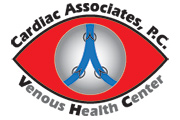
A Rockville, MD Vein Clinic Explains the Differences between Invasive, Non-Invasive, and Minimally-Invasive Medical Procedures
In the News articles we provide on this website, we often use the terms “non-invasive” or “minimally-invasive” to describe the procedures we use to treat vein disease, to distinguish them from more traditional “invasive” procedures. So in the interest of clarity, we’ll explain what each of these terms means, and how they affect you as a patient.
Invasive procedures
In medical terms, an invasive procedure is one in which the physician has to either break the skin or enter it through a body cavity. Thus all open surgery is considered invasive, because it requires that surgeons make incisions in the skin with a scalpel, which in turn requires that either local or general anesthesia be used during the procedure. Invasive procedures can be both necessary and life-saving (consider the occasional need for heart surgery, for example). But at the same time invasive procedures incur certain risks, leave scars, and often require lengthy periods of time to recover from. Only a few years ago, back in the “bad old days” of vein disease treatment, an invasive procedure called “vein stripping” was the only way to permanently remove varicose veins.
Non-invasive procedures
In contrast, non-invasive procedures do not require doctors to break the skin or intrude into a body cavity. If your cardiologist recommends that you have an electrocardiogram (ECG or EKG), that is a non-invasive procedure, because the data is obtained through electrodes pasted to the surface of your skin. Other non-invasive procedures related to vein care would be the use of ultrasound to look beneath the surface of the skin to detect vein disease. Most of the diagnostic methods we use in our Rockville, MD vein clinic are non-invasive.
Minimally-invasive procedures
Technically, even getting a flu shot is somewhat invasive, because the needle breaks the skin. But what doctors mean by a minimally-invasive procedure (MIP) is one that accomplishes the same purpose as open surgery, but in a way that is much less invasive. In the treatment of vein disease, such procedures include sclerotherapy, in which a tiny catheter is inserted into a vein to inject a sealing agent and close it, or endovenous laser treatment, in which a tiny laser is inserted into a vein and used to close varicose veins.
MIPs offer many benefits over open surgery and other forms of treatment. Because there are no large incisions, there is less pain and so in many cases even local anesthesia is not needed. The MIPs that our Germantown MD vein specialists use also leave no scars and require no recovery period; it is common for patients to walk into our offices with varicose veins and walk out without them, all in about an hour, and without ever going to a hospital.
How do I find out more about modern minimally-invasive treatments?
If you have varicose veins or spider veins and are interested in finding out how fast, painless, and easy vein treatment in NYC is these days, we recommend that you spend some time looking over the informative articles we’ve provided on our website at https://www.venoushealthcenters.com//. Or, if you’d prefer to speak to us in person, just give us a call at 301-637-3088 and allow the experts at Venous Health Centers to explain all of their minimally-invasive treatment options to you.
